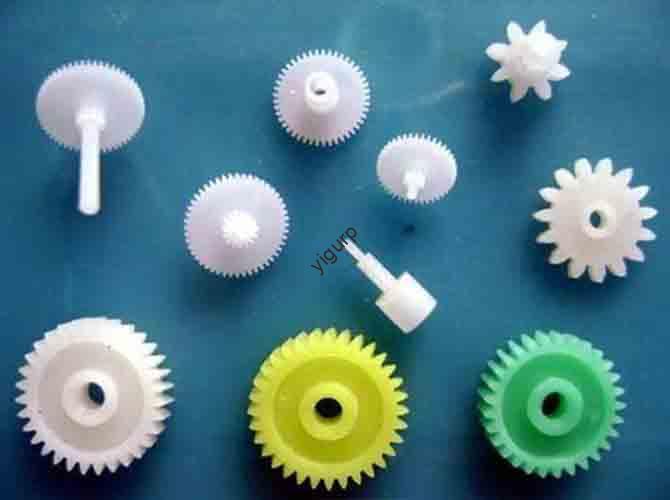En el mundo de fabricación de ritmo rápido de hoy, businesses and engineers constantly seek technologies that cut costs, boost flexibility, and enable innovation. One solution that has risen to prominence? 3D additive printing (También llamó 3D impresión or additive manufacturing, SOY). But what exactly is it, ¿Cómo funciona?, and can it solve your production challenges? Esta guía desglosa todo lo que necesitas saber.
1. What Is 3D Additive Printing? Definición & Principios centrales
En su corazón, 3D additive printing is a digital manufacturing process that builds three-dimensional objects by adding material layer by layer—unlike traditional “subtractive” methods (P.EJ., Mecanizado CNC) that carve or cut material from a solid block.
Key Principles of 3D Additive Printing
- Digitized Foundation: It starts with a 3D model created using CAD (Diseño asistido por computadora) or CAM (Fabricación asistida por computadora) software. This file acts as a “blueprint” for every layer.
- Construcción de capa por capa: The printer reads the CAD file, splits it into thousands of thin 2D layers, and deposits or fuses material (P.EJ., plástico, metal, resina) one layer at a time—stacking them vertically to form the final object.
- No Molds Required: A diferencia de la moldeo o la fundición de la inyección, there’s no need for expensive, time-consuming molds—making it ideal for rapid prototyping and small-batch runs.
2. 3D Additive Printing Technologies: Tipos & Sus aplicaciones
Not all 3D printing technologies are the same. They vary by energy source, material, and molding method. Below is a breakdown of the most common types and where they excel:
| Nombre de la tecnología | Energy Source | Materiales comunes | Aplicaciones clave | Ventajas |
| Estereolitmicromografía (SLA) | Láser UV | Resina fotopolímera | Prototipos, modelos dentales, joyas | Detalle (0.1mm accuracy), superficies suaves |
| Derretimiento láser selectivo (SLM) | Fiber Laser | Polvos de metal (acero, aluminio) | Piezas aeroespaciales, implantes médicos | Fuerte, durable metal components |
| Derretimiento del haz de electrones (MBE) | Electron Beam | Titanio, cobalt-chrome | Implantes ortopédicos, estructuras aeroespaciales | High-temperature processing, desperdicio mínimo |
Casos de uso del mundo real
- Aeroespacial: Boeing uses SLM to print lightweight turbine parts, reducing fuel consumption by 15%.
- Médico: Hospitals create custom 3D-printed prosthetics (P.EJ., hand implants) that fit patients perfectly—cutting wait times from months to weeks.
- Automotor: Tesla uses 3D printing to prototype battery housings, slashing development time by 40%.
3. Ventajas vs. Desafíos: Can 3D Additive Printing Solve Your Problems?
To decide if 3D additive printing is right for you, let’s weigh its strengths against its current limitations:
Ventajas (How It Solves Key Pain Points)
- Complexity Without Extra Cost: Print intricate designs (P.EJ., estructuras de red, canales internos) that are impossible with subtractive methods—no additional labor or tools needed.
- Alta utilización de materiales: Arriba a 95% of material is used (VS. 50-70% in CNC machining), Reducir los desechos y reducir los costos del material.
- Personalization at Scale: Create custom products (P.EJ., dispositivos médicos personalizados, branded promotional items) without slowing down production.
- Prototipos rápidos: Turn a CAD design into a physical prototype in hours (no semanas), acelerar ciclos de desarrollo de productos.
Desafíos (What to Consider)
- Velocidad de impresión: Large or thick parts can take hours or days to print—still slower than mass-production methods like injection molding.
- Limitaciones materiales: Algunos materiales (P.EJ., plásticos a alta temperatura, certain metals) are expensive or lack the strength needed for heavy-industry use.
- Cost-Benefit Balance: Para la producción de alto volumen (10,000+ unidades), traditional methods are still cheaper. 3D printing shines most for small batches or prototypes.
4. Tendencias futuras: Where Is 3D Additive Printing Headed?
A medida que avanza la tecnología, these challenges are being addressed. Here’s what to expect in the next 3-5 años:
- Faster Printing: Nuevas tecnologías (P.EJ., puñetazo) are doubling print speeds, making 3D printing viable for more mid-volume applications.
- Wider Material Range: Companies are developing affordable, high-performance materials—including recycled plastics and bio-based resins.
- Finer Accuracy: Printers with 0.05mm resolution will become more accessible, opening doors for micro-manufacturing (P.EJ., tiny medical sensors).
- Cross-Industry Expansion: Expect growth in fields like construction (3D-printed homes) and food (custom-shaped snacks or nutrient-specific meals).
5. Yigu Technology’s Perspective on 3D Additive Printing
En la tecnología yigu, vemos 3D additive printing Como piedra angular de la fabricación inteligente. It aligns with our mission to help clients reduce waste, speed up innovation, and adapt to changing market demands. We’ve supported aerospace and medical clients in adopting SLM and SLA technologies—for example, helping a dental lab cut prosthetic production time by 50%. While challenges like speed remain, we’re investing in software integrations (P.EJ., CAD-to-printer workflow tools) to make 3D printing more efficient. For businesses ready to move beyond traditional manufacturing, 3D additive printing isn’t just a trend—it’s a strategic tool.
Preguntas frecuentes: Your Top 3D Additive Printing Questions Answered
- q: Is 3D additive printing suitable for mass production?
A: Actualmente, no—for batches of 10,000+ unidades, Métodos tradicionales (P.EJ., moldura de inyección) are cheaper and faster. But it’s ideal for small batches (1-1,000 unidades) and personalized products.
- q: What materials can I use for 3D additive printing?
A: Common options include plastics (Estampado, Abdominales), rieles (aluminio, titanio), resinas, and even specialty materials like carbon fiber or ceramic. The choice depends on your application (P.EJ., resina para detalles, metal for strength).
- q: How much does a 3D additive printer cost?
A: Entry-level desktop printers start at \(200-\)500 (for hobbyists), while industrial-grade printers (P.EJ., SLM para metales) rango de \(50,000 a \)1 millón. The cost also includes materials and software.
